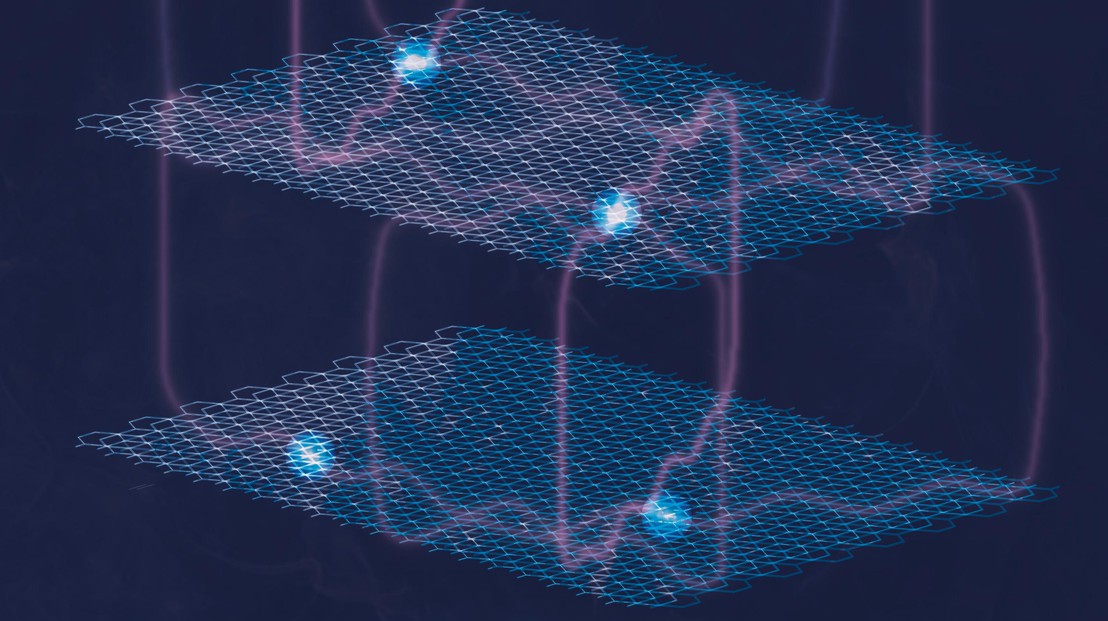
While conducting experiments on a layered metal, EPFL researchers witnessed something very surprising. The unexpected electron behavior they discovered could open up possibilities in the field of quantum computing.
In the world of materials science, sometimes main discoveries can be found in unexpected places. While working on the resistivity of a type of delafossite – PdCoO2 – researchers at EPFL’s Laboratory of Quantum Materials discovered that the electrons in their sample did not behave entirely as expected. When a magnetic field was applied, the electrons retained signatures of their wave-like nature, which could be observed even under relatively high temperature conditions and appeared in relatively large sizes. These surprising results, obtained in collaboration with several research institutions, could prove useful, for example in the quest for quantum computing.
Usually electron movements in a metal wire are captured well by their particle-like aspects, since their wave-like nature is far too faint and masked by various other interactions. Only under highly specific laboratory conditions, particularly at very low temperatures, experiments by Richard Webb and coworkers had famously uncovered the wave character of electrons in metals.
The sample studied was PdCoO2, whose electronic structure is nearly two-dimensional and extremely pure, and which is used as a catalyst in chemistry. The researchers were surprised to observe a new type of oscillations that exhibited significant coherence lengths when the sample was subject to a magnetic field. This coherence is important when trying to preserve quantum states and the conditions under which it occurred should not have been possible under the basic principles of physics. In this case, they were noted at temperatures up to 60 Kelvin and at length scales of up to 12 microns.
“This is truly surprising,” says Philip Moll, who heads EPFL’s Laboratory of Quantum Materials. “It’s the very first time this quantum effect has been observed in such a large piece of metal. 12 micrometers may seem small, but for the dimensions of an atom, it is gigantic. This is the length scale of biological life, such as algae and bacteria.”
The research has been published in the journal Science.
